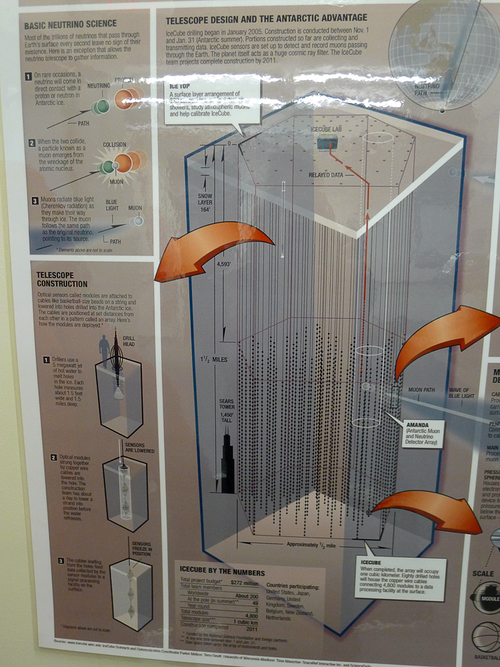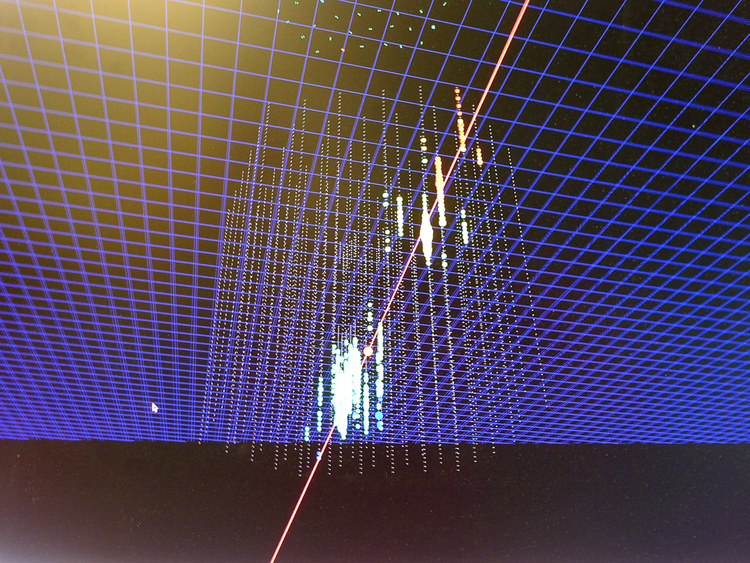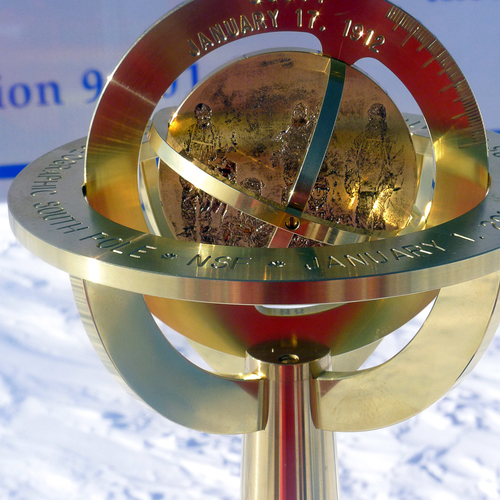November 12 - The South Pole
We are finally going to the South Pole where we will be met by Paul Sullivan to give us an extensive tour of the facilities.
Besides being very interested in the research being done at the South Pole, I am also interested in the differences in light between the South Pole and McMurdo.
The South Pole is 700km due south from McMurdo and has the purest air in the world. It is an ideal place to study the atmosphere, galaxies, and small particles known as neutrinos.
We check in at building 140 with all of our ECW gear (our orange bags that carry our emergency equipment in case we need to stay over at the South Pole).
Boarding our C-130 at 8:15AM to go to the South Pole
Our pilots
The seats are on the sides leaving room for cargo in the center
Equipped with a toilet for women...just pull the curtain for privacy
View of take-off from the window
The flight to the Pole was over the Trans Antarctic Mountain range, offering amazing aerial views
Approaching the Pole was extraordinary… Offering the first glimpse of the crystal blue sky that exists at the Pole
The South Pole Station has been rebuilt and is both functional and attractive.
The Station houses science research, housing, a post office, store, lounge, dining, and offices. The weather never reaches 0 degrees so being inside most of the time is essential. Today it was a mild day at -37degrees with a wind chill of -64 degrees.
The science offices
Liquid nitrogen to keep the outside dome from fogging
Sky camera that photographs the sky through the dome ceiling
A little tropical fantasy
The dining room where we had real ice cream (no real ice cream served at McMurdo)
Our first visit was to the ARO (Atmospheric Research Organization), which is part of NOAA (National Oceanic and Atmospheric Administration)... It is here that the atmosphere is analyzed. The South Pole has the purest air in the world and therefore it is an ideal location to measure UV light, ozone depletion, and the composition of various atmospheres around the world in relationship to the atmosphere in the South Pole, which is extremely pure.
Not even a snowmobile can come within this distance
The atmospheric measurements are measured without any interference due to pollution…
It looks like CO2 is rising all over the world. One of the reasons is that the earth is getting warmer and when the soil defrosts. The earth releases Carbon, which will be used by microorganisms that will metabolize the Carbon and release CO2 into the atmosphere. The increase in CO2 will warm the earth.
The next facility is the home of the Ice Cube Project. This project focused on detecting invisible uncharged particles called neutrinos. A neutrino can travel through the earth from the North to the South Pole. There are neutrinos everywhere including the atmosphere and the mapping of them is of great scientific interest.
The Ice Cube project consists of drilling 86, 2 Kilometer deep holes in the ground. The holes were spread over 1 square Kilometer. In each hole, a cable with 56 DOM's was suspended. The hole was then filled up with water, making the entire underground space a 1 Square Kilometer Ice Cube.
The locations are under the snow and only marked by flags
Diagram of the Underground Ice Cube
The light from this collision is read on the computer
This telescope measures in the microwave, millimeter wave and sub millimeter wave region of the electromagnetic wave spectrum. It can find hundreds of massive clusters of distant galaxies.
The atmosphere at the South Pole is thin and extremely cold which eliminates water vapor. Water vapor can emit radiation, which can interfere with incoming astronomical signals.
This is a detailed view of the CMB (Cosmic Microwave Background) or the radiant light left over from the Big Bang (13.5 Billion years ago). This photograph is from 400,000 after the Big Bang. Because light takes so long to reach the Earth, the telescope can show what happened in the past in the universe.
Inside the telescope
We then went to the geographical South Pole. This is where all GPS is measured from… the South Pole is 90 degrees. Of course we walked around the Pole so we could be in all time zones in a few seconds!
The South Magnetic Pole is approximately 600 miles north in the Southern Ocean
The ceremonial South Pole
I did take some photographs of the snowdrifts. The snow is so pure, fine, dry, and devoid of any impurities that the snowflakes do not reflect and refract the light as would if the snowflake were in another location. The snow is very smooth and gives an unrealistic view of the ripples in the snow.
These are color photographs.
It is a strange feeling to be at the bottom of the world where all points point North.
















































